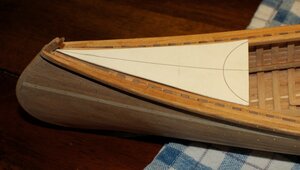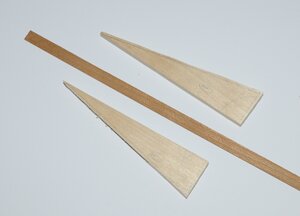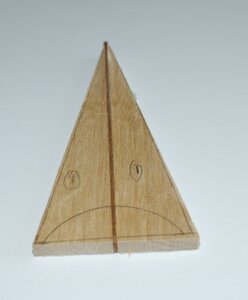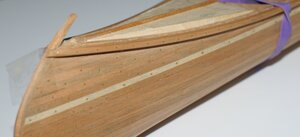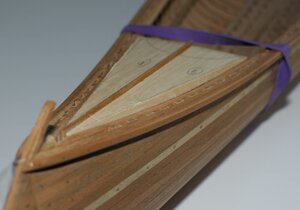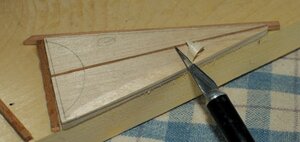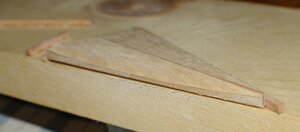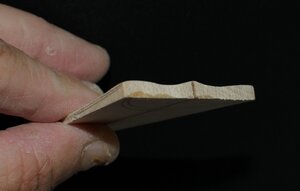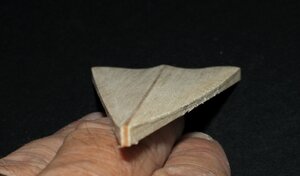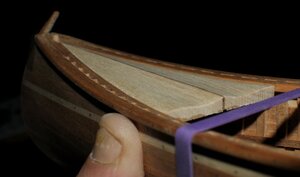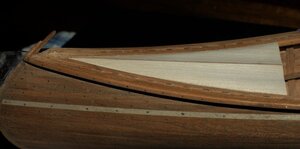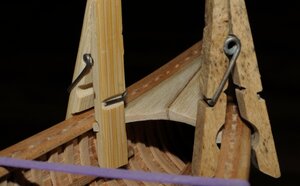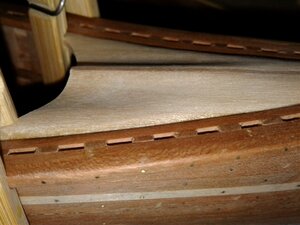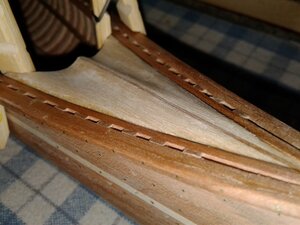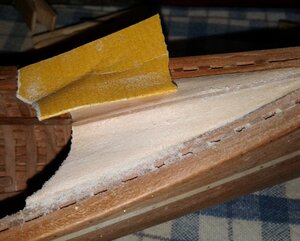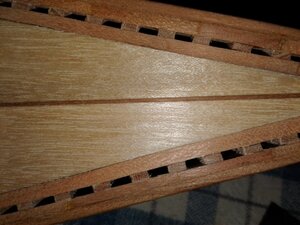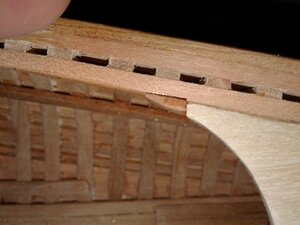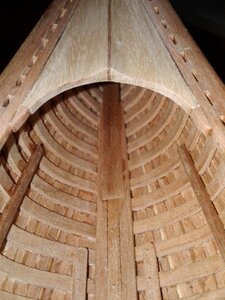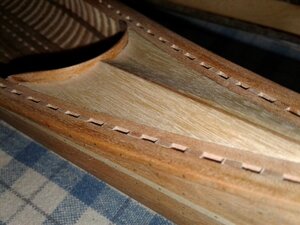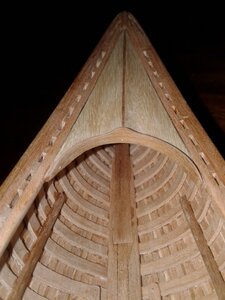Step 8:
The decks is permanently installed (glued in place).
Although dry fitted did show that the outside edge followed the sheer line, the deck will still need to be sanded down to offer a smooth joint with the gunwales.
The deck "clamped" in place...
View attachment 171316
View attachment 171317
In the photos above, you will note some sanding is required along the upper face of the deck to achieve a nice smooth / level joint with the gunwale.
View attachment 171325
The joint...
View attachment 171328
Then, installing the "rail" at the edge of the deck.
Installation of a filling piece to extend the corner of the deck. I do not normally do this as I just shape the corner of the deck into a point, but as sometimes break off, some builders may not want to take a chance, so this is an alternative.
The filling piece needs to be shaped into a "wedge" use as an extension to the deck.
View attachment 171333
View attachment 171334
Then the "rail can be installed.
View attachment 171336
This concludes the installation of the deck.
Again, the length, shape, detailing offer flexibility: what is shown here is just an example, so you can let your imagination and creativity take over.
G.




